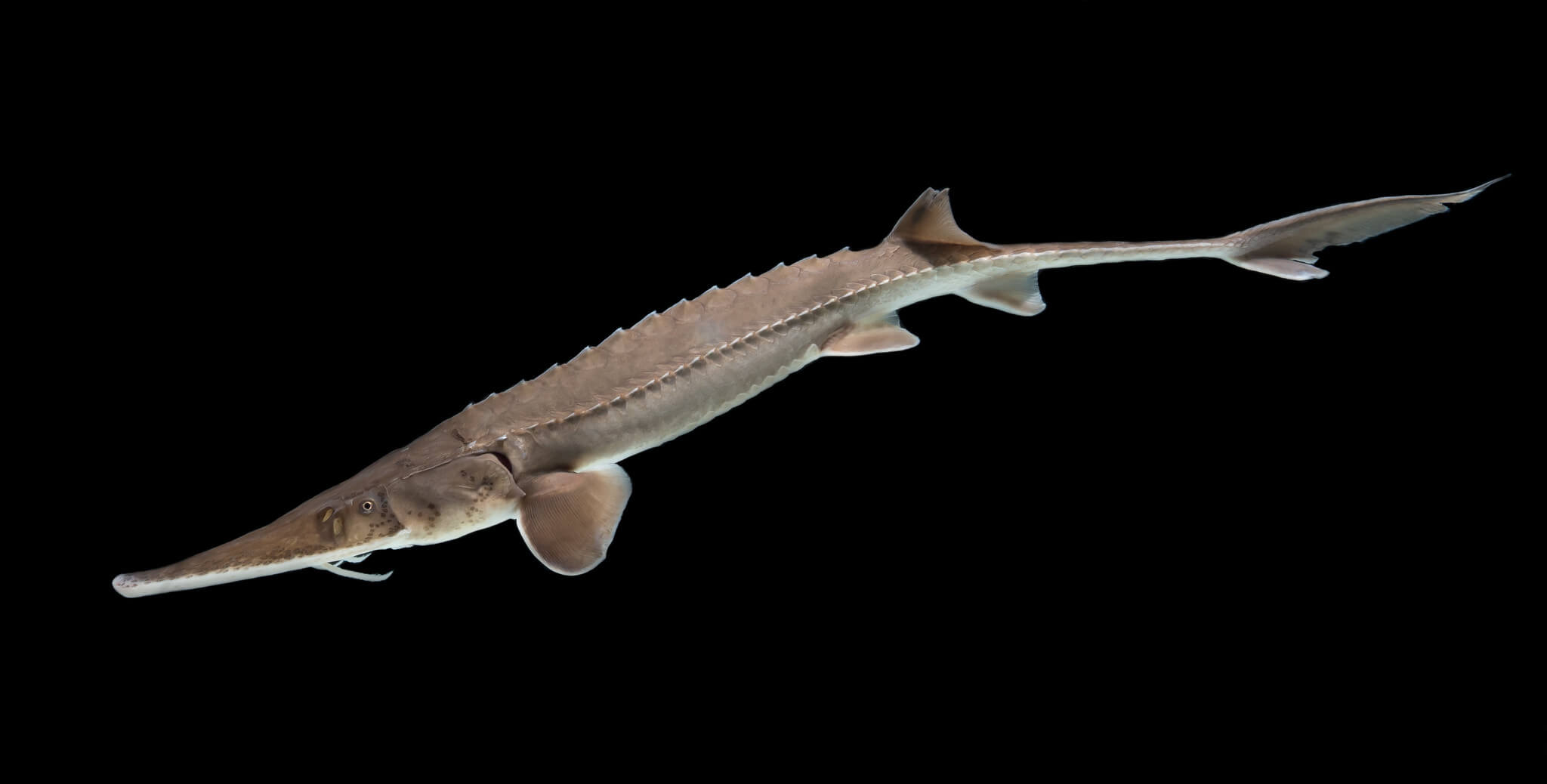The Dinosaur in the River
By Kendra Lisum
Broadcast 1.17 & 1.20.2024

Photographed at Gavins Point National Fish Hatchery in Yankton, SD by Sam Stukel (USFWS), public domain.
Listen:
I was 10 when I first came to Montana, and deep into my obsession with Jurassic Park. As we drove across the plains in the eastern half of the state, you’d be hard pressed to convince me that I wasn’t seeing a lone Tyrannosaurus rex stalking herds of duckbills as I gazed out the car window.
When the Rocky Mountains were first forming, back when most of the state was covered in the Western Interior Seaway, Montana was home to some of the most famous dinosaurs, including the T. rex and the Triceratops. But did you know that we have our very own dinosaur living right here in the waters of the Missouri and Yellowstone rivers?
The pallid sturgeon is an ancient fish that has existed for 70 million years, tracing its lineage back to that same Cretaceous period when real-life Tyrannosaurs and armored Ankylosaurs roamed the land.
A grayish-white fish with lengthwise rows of bony plates, called scutes, along its back, pallid sturgeon thrive in fast-moving waters with rocky or sandy bottoms, like those of the Missouri and Mississippi Rivers. It uses its shovel-like nose to stir up muck along the riverbed, and whisker-like sensors in its head, called barbels, to detect the electric fields of prey. When detected, the pallid’s toothless, telescoping mouth shoots outward to suck up its meal.
Pallid sturgeon can grow up to six feet long and weigh up to 80 pounds. They can live as long as 50 years, and spawn every two to three years, triggered by the rising water of spring floods. Their larvae, adapted to live at the bottom of large, silty rivers, bump along for miles as they eat their way out of their yolk.
And this is where the trouble begins.
The Missouri River, one of the few places pallid sturgeons call home, was once a raging, turbulent river whose enormous loads of sediment earned it the nickname Big Muddy. Its powerful seasonal floods ripped trees from the ground and submerged them beneath its surface. The branches and root balls of those sunken giants provided ideal hiding places for the helpless pallid larvae.
But as pioneers and settlers crossed Montana, those same trees and rapid waters proved difficult and dangerous for boats carrying freight and people to the burgeoning West.
Enter the US Army Corps of Engineers. They dammed the Missouri in six places and built dikes and rocky barriers along its banks. This straightened and deepened the river and all but eliminated the powerful seasonal flooding. The slowing of the water also allowed the sediment to settle, making way for microorganisms that suck up vast amounts of oxygen while leaving little behind for the tiny pallid larvae to breathe.
In the face of all this human intervention and environmental shifts, the pallid sturgeon, a living connection to the Age of the Dinosaurs, now stands at the precipice of extinction. Placed on the Endangered Species List in 1990, it is estimated that only about 250 pallids remain in the South Dakota and Montana river systems, while less than 10,000 live in the Yellowstone, Missouri, and Mississippi Rivers between here and the Gulf of Mexico.
A rescue and restoration effort is underway not only to learn more about these prehistoric fish, but also to help breed pallids in captivity. The Army Corps of Engineers has begun to release water to mimic spring floods in hopes of spurring pallids to breed, and a hatchery in Miles City has been capturing and breeding pallids with some success.
For me, the pallid sturgeon has bridged the gap between my childhood fantasies of dinosaurs roaming our land, and the genuine challenges faced by prehistoric survivors.
In the pallid’s story, we find not only a survivor but a call to action, urging us to protect and preserve the fragile threads of life that connect us to Earth’s ancient history.
Every week since 1991, Field Notes has inquired about Montana’s natural history. Field Notes are written by naturalists, students, and listeners about the puzzle-tree bark, eagle talons, woolly aphids, and giant puffballs of Western, Central and Southwestern Montana and aired weekly on Montana Public Radio.
Click here to read and listen to more Field Notes. Field Notes is available as a podcast! Subscribe on Apple Podcasts or wherever you listen to podcasts.
Interested in writing a Field Note? Contact Allison De Jong, Field Notes editor, at adejong [at] montananaturalist [dot] org or 406.327.0405.
Want to learn more about our programs as well as fun natural history facts and seasonal phenology? Sign up for our e-newsletter! You can also become a member and get discounts on our programs as well as free reciprocal admission to 300+ science centers in North America!












